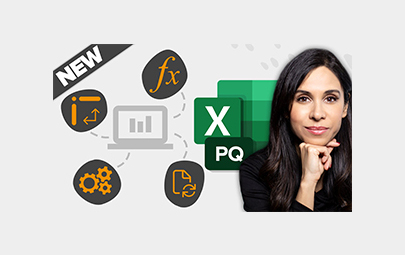-
×
 Million Dollar Masterclass By Eileen Wilder
1 × $85,00
Million Dollar Masterclass By Eileen Wilder
1 × $85,00 -
×
 Secrets Of Subtle Sales Mastery Deluxe By Paul Ross
1 × $23,00
Secrets Of Subtle Sales Mastery Deluxe By Paul Ross
1 × $23,00
Fundamentals of Financial Analysis By Leila Gharani
$179,00 $39,00
SKU: 46570zEnuBmqY
Category: Office Productivity
Tags: Fundamentals of Financial Analysis, Leila Gharani
Fundamentals of Financial Analysis By Leila Gharani – Instant Download!
Description:
Fundamentals of Financial Analysis By Leila Gharani

Whether you’re a newbie or a seasoned MBA, you’ll FINALLY “get” the big picture
Mastering the language of finance offers a significant career advantage, leading to confidence, recognition, and advancement opportunities. Leila Gharani’s comprehensive course empowers learners of all backgrounds, including those without prior finance or accounting experience.
Whether you’re a novice or a seasoned professional, the ability to interpret financial statements and offer recommendations is invaluable, regardless of your industry or expertise level.
Enhancing financial analysis skills aligns with Warren Buffett’s wisdom on self-investment and opens doors to various career objectives, such as securing a financial analyst position, advancing in corporate roles, or making informed investment decisions. By honing these skills, individuals increase their likelihood of success in achieving diverse goals and seizing new opportunities.
XelPlus ensures students are equipped to navigate financial challenges confidently, offering the tools to interpret financial data effectively and realize their ambitions.
It’s typically because they’re held back by one of these common myths:
3 Common Myths about Financial Analysis
Myth #1: “I’m Not Qualified”
Myth #2: “I Don’t Work In The Finance Department”
Myth #3: “There’s Nothing New For Me To Learn”
Which Skill Do You Want To Learn Most?
In the list below, you’ll find some of the most useful finance skills.
If these aren’t yet old habit, you’ll be surprised at how quickly you master them when you follow our course’s over-the-shoulder, step-by-step tutorials.
- How to reconcile the flow of financial transactions from journal entries to a trial balance
- How to create and read the main financial statements and how they link
- How to calculate metrics and ratios to judge financial performance
- How to improve cash flow by managing your working capital
- How to prepare Excel so you spend less time doing setup and more time gathering insights
- How to apply theoretical time value of money concepts to real world projects so you make better decisions
- Proven techniques for preparing sound forecasts and budgets
But that’s only a taste of what’s included. You can see the entire curriculum below
Here’s a Glimpse of Your Learning Path
You can view the detailed curriculum below.
See anything that jumps out? Which lesson do you think you’d begin with?
Section 1: Introduction
Welcome to Financial Analysis Course
Download Course Material
Section 2: Financial Analysis Overview
What is Financial Analysis
Skills Needed for a Financial Analyst
Career Trajectory of a Financial Analyst
Section 3: Accounting – The Core Principles
What is Accounting and Why Do You Need it
Challenge: Debits and Credits
T-Accounts
Journal Entries
Trial Balance
Types of Financial Statements
Quiz: Accounting Basics
Key Takeaways: Core Principles
Section 4: Accounting Case Study – Accounting for a Beach Business
Accounting for a Beach Business – Getting Started
Accounting for a Beach Business – Journal Entries
Accounting for a Beach Business – Trial Balance
Accounting for a Beach Business – Financial Statements
Accounting for a Beach Business – What Happens Next Year
Section 5: Accounting – Essential Concepts
Cash VS Accrual Accounting
Depreciation – Basics
Depreciation – Example
Inventory and COGS
Inventory Cost Flow Assumptions
Quiz: Accounting Essentials
Key Takeaways: Essentials
Section 6: Financial Statements – Income Statement
Main Purpose and Components
Format of Income Statements
How to Read an Income Statement: Case Study – Microsoft
Constructing an Income Statement
Quiz: Income Statement
Section 7: Financial Statements – Balance Sheet
Assets – Definition
Assets – Types
Types of Liabilities
Equity
How to Read a Balance Sheet: Case Study – Microsoft
Constructing a Balance Sheet
Quiz: Balance Sheet
Section 8: Financial Statements – Cash Flow Statement
How to Read a Cash Flow Statement: Case Study – Microsoft
Cash Flow Operating: Direct VS Indirect Method
Constructing a Cash Flow Statement
Quiz: Cash Flow Statement
Section 9: Financial Statement Analysis
Important Ratios to Analyze Financial Statements
Calculating Growth
Horizontal vs. Vertical Analysis
Compound Annual Growth Rate (CAGR) Vs. AAGR
Quiz: Financial Statement Analysis
Section 10: Time to Test Your Knowledge
Congratulations – What You’ve Achieved so Far
Quiz: Test Your Knowledge
Challenge: Financial Statements
Section 11: Necessary Excel Functions for Financial Analysts
Most Common Excel Functions for Financial Analysis
TRIM Function
Median VS Mean Calculation
Common Date Functions
Calculating Working Days & Future Dates
Combine Text & Numbers
Excel SUMPRODUCT Function (Skip extra Calculations)
Challenge: Excel Functions
Key Takeaways: Necessary Excel Functions
Section 12: Important Excel Features for Financial Analysts
Goal Seek
Showing Numbers in Millions / Thousands
Tips for Proper Datasets (Good Functionality, Good Looks)
Advantages of Excel Tables
Conditional Formatting – Top / Bottom Analysis
Challenge: Excel Features
Key Takeaways – Important Excel Features
Section 13: Master Pivot Tables for Financial Analysis
Pivot Tables for Quick Data Analysis
Calculate Percentages & Change Aggregation in Pivot Tables
GetPivotData Function in Excel
Slicers in Pivot Tables to Create Dashboards
Working with Dates in Pivot Tables
Challenge: Pivot Tables
Create a Pivot Table from Multiple Sheets
Key Takeaways: Pivot Tables
Section 14: Common Charts & Graphs for Financial Analysis
Line Chart in Excel
Column Chart & Stacked Column Chart
Plotting Multiple Series (Line & Column Chart in One)
Charts in Cells – Sparklines in Excel
Waterfall / Bridge Chart in Excel
Pie Chart & Doughnut Chart in Excel
Pareto Chart
Challenge: Excel Charts
Section 15: Working Capital Management
Overview
Receivables
Inventory
Payables
Challenge: Working Capital
Quiz: Working Capital
Key Takeaways: Working Capital
Section 16: The Time Value of Money
The Time Value of Money Explained
Understanding Discounted Cash Flows (DCF)
Net Present Value (NPV)
Internal Rate of Return (IRR)
Calculating Payback Period with Varying Cash Flows
Weighted Average Cost of Capital (WACC)
Quiz: Time Value of Money
Key Takeaways: Time Value of Money
Section 17: Financial Leverage
Why Companies Take on Debt
Annuities (PMT)
Calculating Periods to Payback (NPER)
Calculating a Complete Loan Schedule
Calculate Interest Rate for a Loan
Challenge: Debt
Quiz: Financial Leverage
Section 18: Financial Forecasting
Simple Moving Average
Weighted Moving Average
Exponential Triple Smoothing
Allocating Yearly Values to Months
Variance and Standard Deviation
Regression Equation & Relationship between Variables
Regression Analysis
Quiz: Forecasting
Next Steps
Wrapping up & What You’ve Achieved
BONUS: Mini Course – Power Query for Financial Analysts
Will I Need Power Query?
Properly Structure Data in Seconds
Merge Pivot Table Report with Other Tables
Case Study: Import Messy SAP Data Extract into Excel
Pivot Table from Messy Data
Combine Data from Multiple Sheets into ONE Pivot Table
Import Data from PDF (Office 365)
The Power of Power Query
Join Fundamentals of Financial Analysis By Leila Gharani now

- The course offers an innovative topic search feature inspired by Star Trek’s transporter technology, enabling instant access to specific content.
- It provides a simplified explanation of financial accounting and analysis with practical examples, catering to both beginners and experienced professionals.
- Cheat sheets are provided to aid quick reference during busy workdays.
- Enrollees receive a bonus Power Query mini-course to enhance data cleaning and organization skills in Excel.
- The course targets ambitious beginners aspiring for careers in finance as well as established professionals seeking to deepen their financial expertise and Excel proficiency.
- Emphasis is placed on the importance of financial skills for career advancement and long-term success.
- The author encourages individuals to prioritize financial education and highlights the course’s value proposition in achieving financial competence and potential return on investment.
Tags: Fundamentals of Financial Analysis By Leila Gharani, Fundamentals of Financial Analysis By Leila Gharani, Fundamentals of Financial Analysis By Leila Gharani, Fundamentals of Financial Analysis By Leila Gharani
Frequently Asked Questions:
1. Innovative Business Model:
- Embrace the reality of a genuine business! Our strategy involves orchestrating a group purchase, wherein we collectively distribute costs among members. Utilizing these pooled funds, we acquire in-demand courses from sales pages and make them accessible to individuals facing financial constraints. Despite potential reservations from the original authors, our customers value the affordability and accessibility we offer.
2. The Legal Landscape: Yes and No:
- The legality of our operations resides in a gray area. While we lack explicit approval from course authors for resale, a legal nuance comes into play. During the course acquisition, the author did not specify any restrictions on resale. This legal intricacy presents both an opportunity for us and a benefit for those seeking budget-friendly access.
3. Quality Assurance: Revealing the Real Deal:
- Delving into the core of the matter – quality. Procuring the course directly from the sales page ensures that all documents and materials are identical to those obtained through conventional means. However, our differentiator lies in going beyond individual study; we take an extra step by facilitating resale. It’s crucial to note that we are not the official course providers, which means certain premium services are not included in our package:
- No coaching calls or scheduled sessions with the author.
- No access to the author’s private Facebook group or web portal.
- No entry to the author’s exclusive membership forum.
- No direct email support from the author or their team.
We operate independently, aiming to bridge the affordability gap without the additional services offered by official course channels. We greatly appreciate your understanding of our unique approach.
Be the first to review “Fundamentals of Financial Analysis By Leila Gharani” Cancel reply
You must be logged in to post a review.
Related products
Office Productivity
Master Excel Power Query – Beginner to Pro (including M) By Leila Gharani
Office Productivity







Reviews
There are no reviews yet.